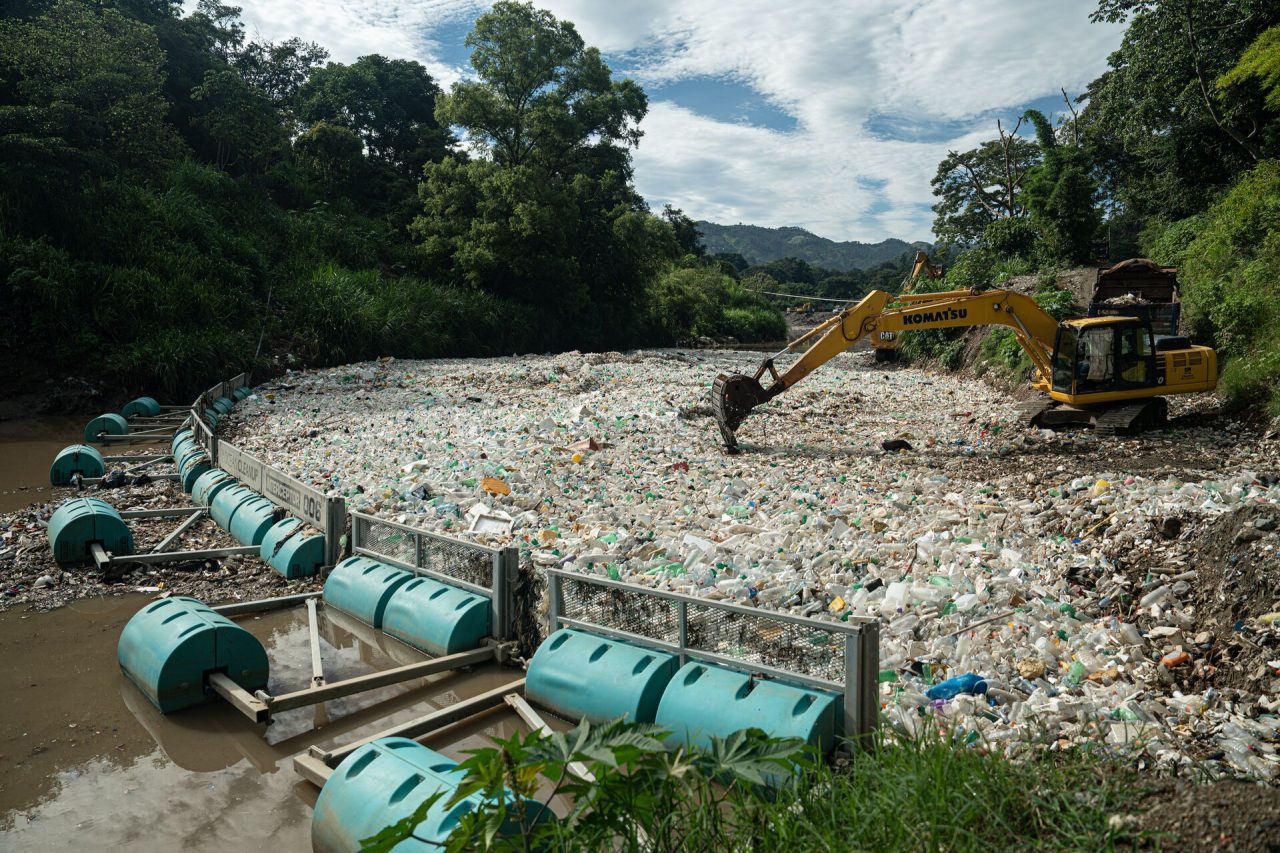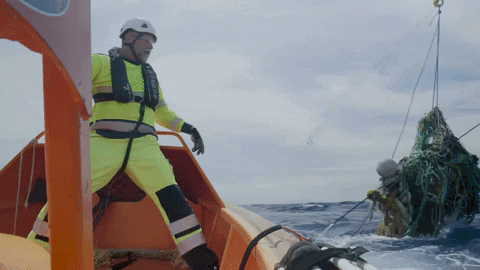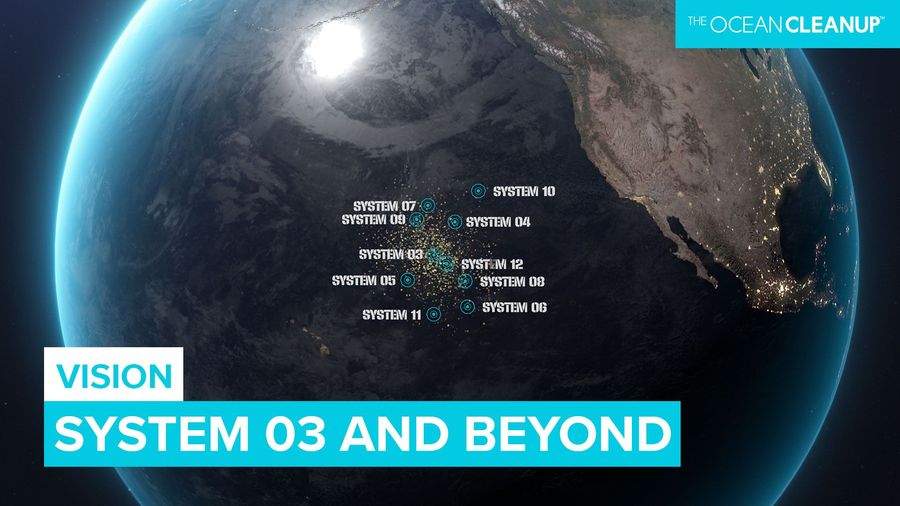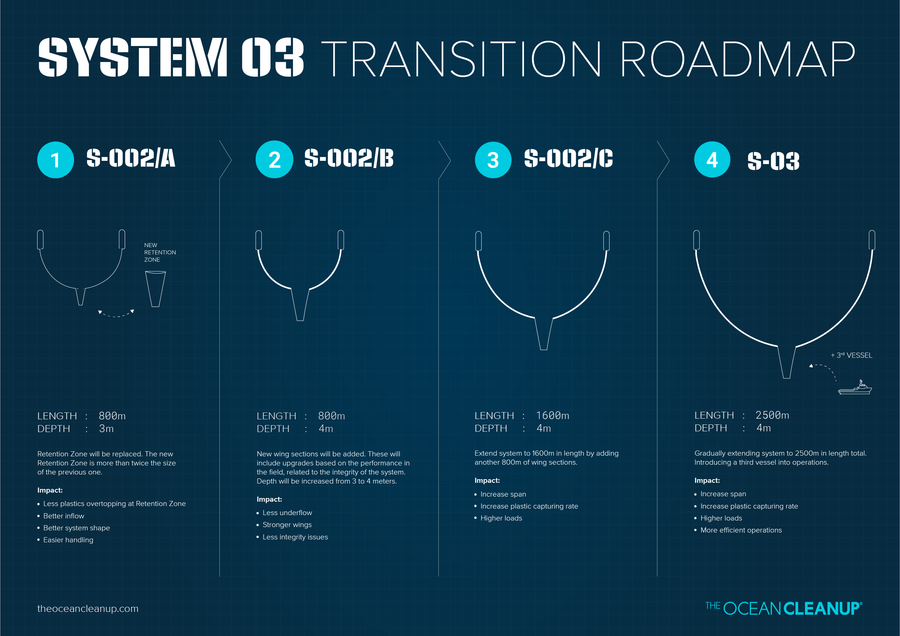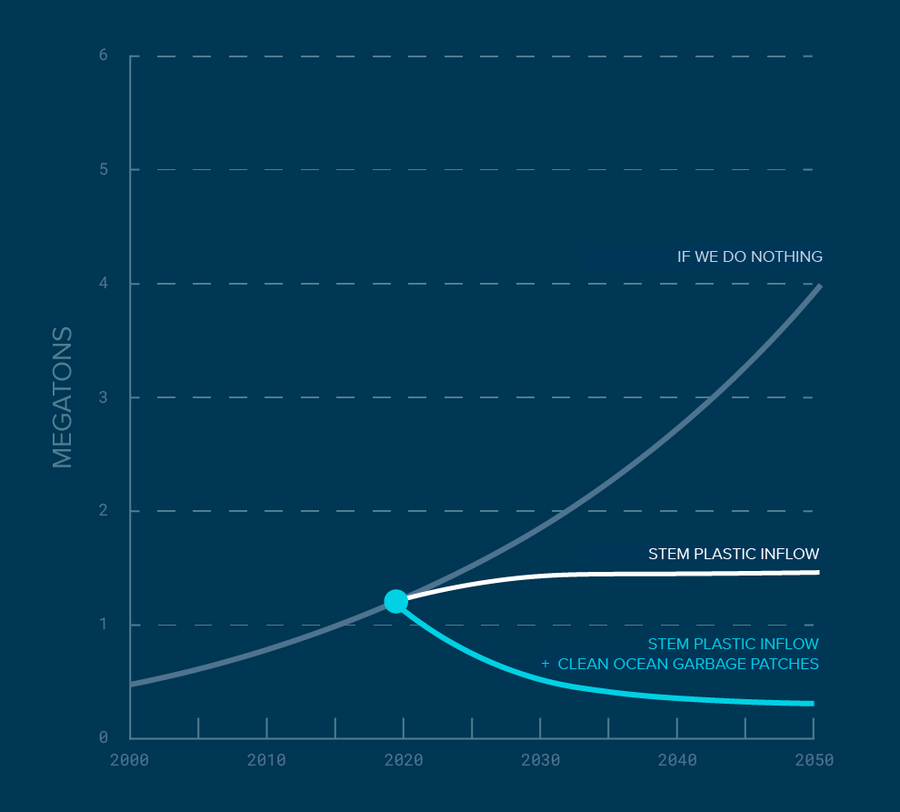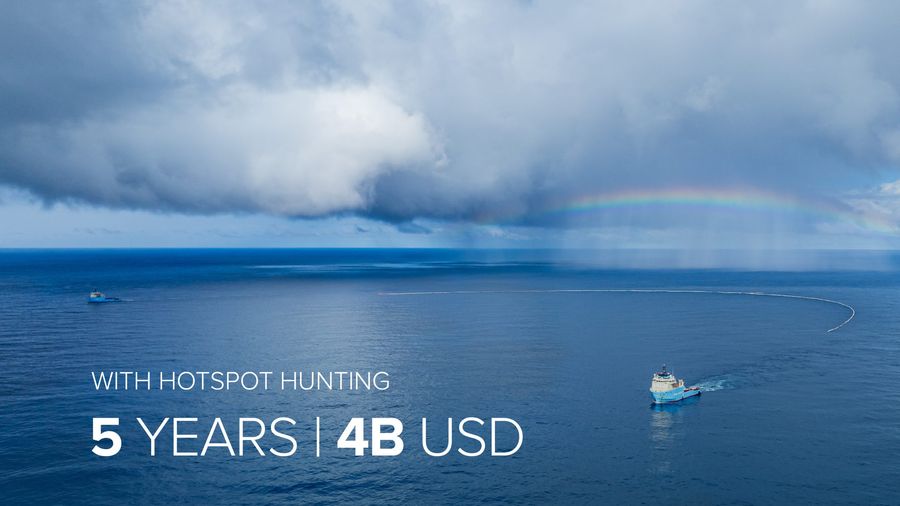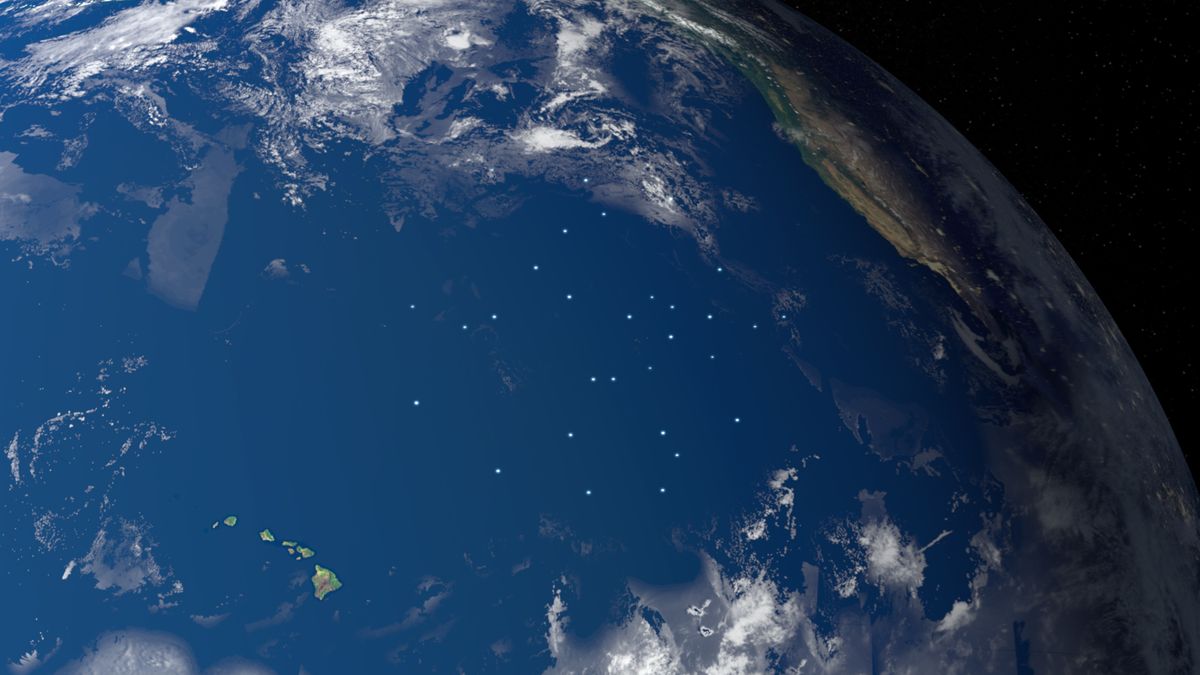
Having taken the learnings from System 002 and applying them to subsequent iterations of the technology, System 03, we will scale up in the Great Pacific Garbage Patch. By implementing the Hotspot Hunting strategy, we anticipate a more efficient cleanup of the GPGP. With this blueprint for scale-up, we will look to deploy a fleet of systems into all the other four ocean gyres.
To effectively solve plastic pollution, we need to stop the inflow and clean up what is already out there. The plastic that circulates in the five gyres has been accumulating over the past 60+ years and will not go away by itself. Instead, the material breaks down into smaller and smaller pieces over time. At a certain level, these nano- and microparticles will become too small to collect. It is, therefore, crucial to begin cleaning up as soon as possible and defuse this ticking time bomb.
HOW MUCH DOES IT COST TO CLEAN UP THE GREAT PACIFIC GARBAGE PATCH?
Our modelers estimate that the GPGP can be cleaned within 10 years for a total cost of $7.5 billion. However, we estimate we can accelerate this process further. The GPGP is not an island of trash; it resembles a plastic soup, with areas of higher plastic concentration, namely “hotspots”.
By actively tracking where plastic hotspots form, we can direct our vessels to these areas more efficiently. This means collecting more plastic and cutting costs—all while reducing our emissions. With advanced hotspot hunting, we believe we can clean the entire patch in just 5 years and for half the cost.
Following mission one we created our first plastic product: The Ocean Cleanup sunglasses. In 2024, we have worked with our partner, Kia, to develop the limited-edition trunk liner for the Kia EV3, the very first car accessory made with ocean plastic from the Great Pacific Garbage Patch.
Going forward, we’ll be working with partners to develop products with The Ocean Cleanup plastic. This will allow us to focus on our core mission of cleaning up, and it ensures quick scalability as we harvest exponentially more plastic the more ocean systems we deploy.
Your company can be a part of the biggest cleanup in history. Coldplay, Deloitte, Kia and Societé Generale are just a few already partnering with us. Reach out via our website contact form to discuss a potential collaboration.
